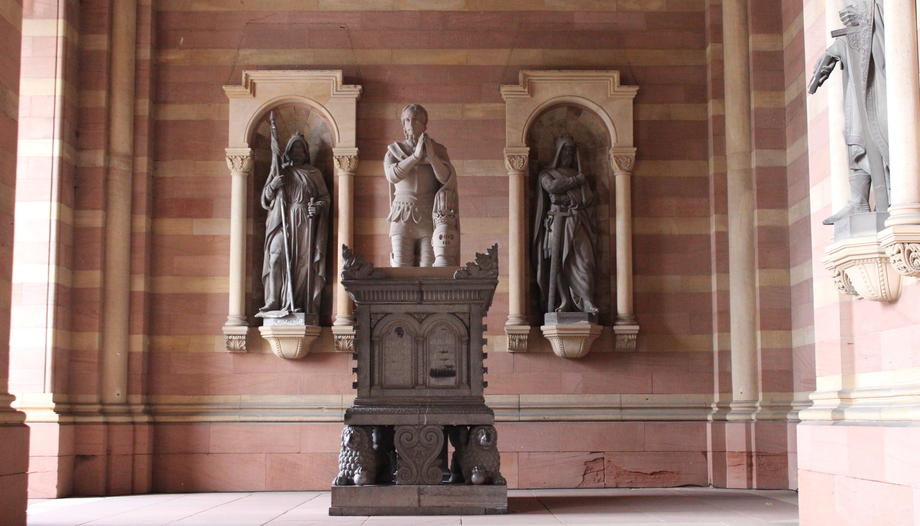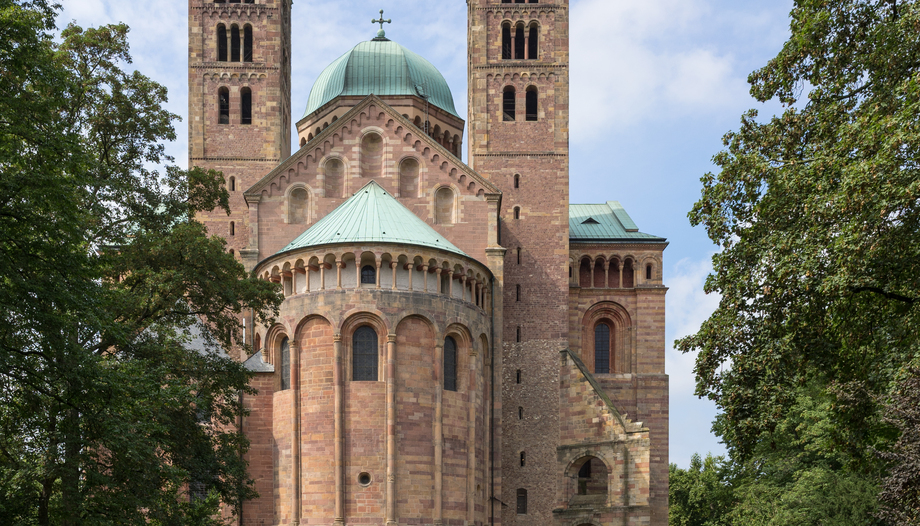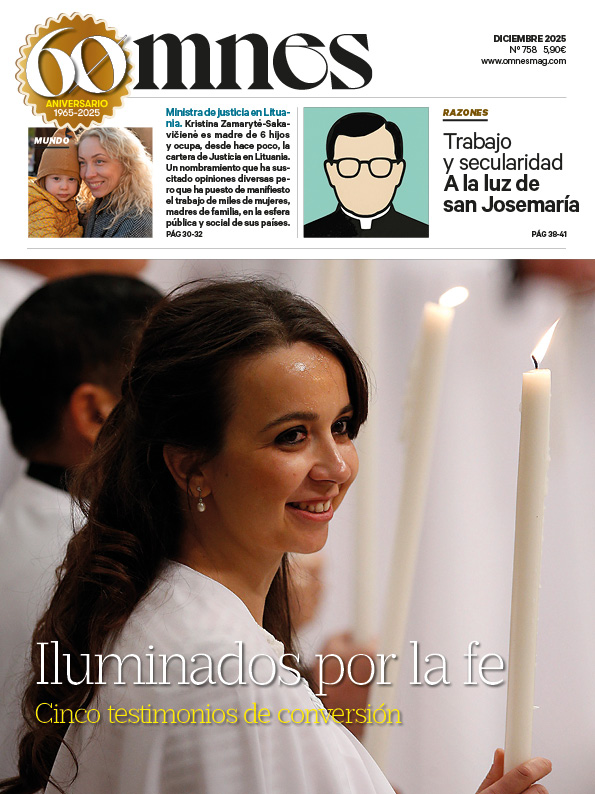The cathedral of Speyer is the largest Romanesque church in the world. Dedicated to the Virgin Mary and the protomartyr St. Stephen, its miraculous image made it an important place of pilgrimage in the diocese. It is said that St. Bernard of Clairvaux added the invocations "o clemens, o pia, o dulcis virgo Maria" to the hymn "Salve Regina" before this image.
Destroyed by the French revolutionary troops in 1794, Pope Pius XI donated a new pilgrimage image in 1930. St. Edith Stein and Pope John Paul II, for example, prayed before it.
The construction of the cathedral of Speyer
The ambitious cathedral project was initiated by King and later Emperor Conrad II around 1025. He ordered the construction of the imperial cathedral and St. Mary's Cathedral in Speyer, for which a canal was built from the Palatinate Forest to the Rhine in order to transport the necessary stone and timber. Despite these efforts, neither Conrad II (990-1036) nor his son Henry III (1017-1056) saw the completion of the cathedral during his lifetime.
Henry III donated the "Gospels of Speyer", an illustrated work of the four Gospels, for the consecration of the high altar in 1046. The entire building was consecrated in 1061, under the reign of his grandson Henry IV (1050-1106). However, just 20 years later, Henry IV ordered the demolition of half of the cathedral to rebuild it larger. Only some parts, including the old crypt, remained intact.
In 1106, the year of Henry IV's death, the new cathedral was completed with a length of 134 meters and a width of 33 meters, making it one of the largest buildings of its time.
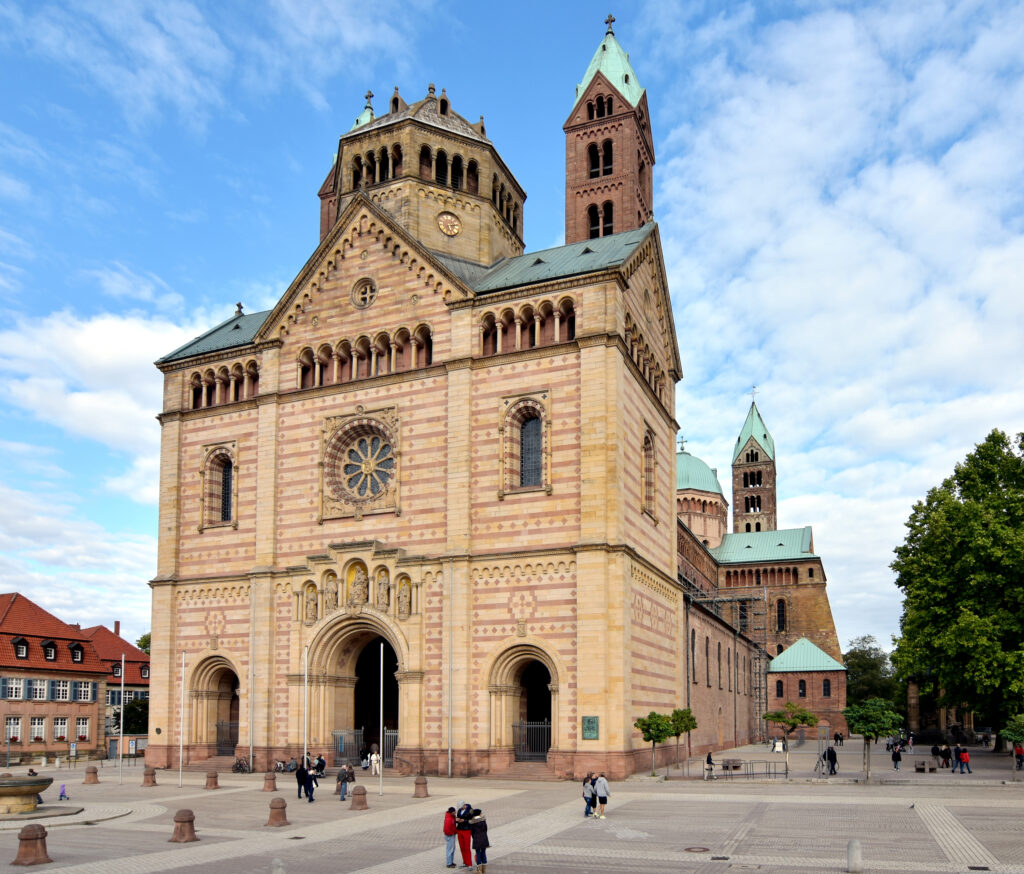
Unique architecture
The plan of the basilica is characterized by the balance between the eastern and western parts and the symmetrical towers that frame the structure formed by the nave and transept. The building became the first fully vaulted church in Europe in 1077 at the behest of Henry IV. Its structure influenced the development of Romanesque architecture in the 11th and 12th centuries; the plan was frequently adopted, especially in the Rhineland. The vaulting of the central nave was the first of this size since Antiquity, with a specific vaulting system, in which two bays of a side aisle correspond to each bay of the central nave. The cathedral of Speyer is also the first church with a completely surrounding and accessible dwarf gallery.
Particularly noteworthy is the crypt, which dates from the first phase of construction and was probably consecrated in 1043. It extends under the entire choir and transept. Four sections of rooms join to form a wide vestibule crypt, almost seven meters high. The alternating red and yellow sandstone arches symbolize the divine order that structures Christian life.
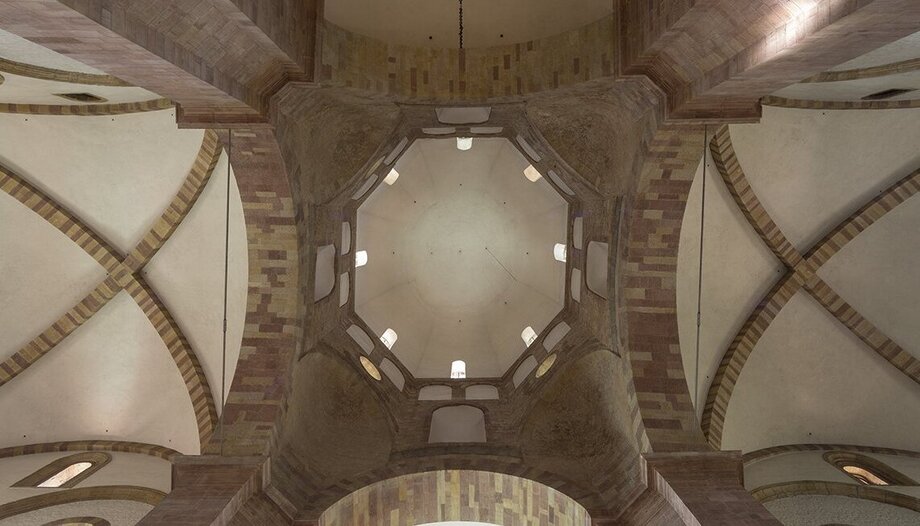
Destructions and restorations
Throughout history, the cathedral has been destroyed several times. During the War of the Palatinate Succession, Speyer was occupied by French troops in 1688 and the cathedral burned down in 1689, collapsing large parts of the building. However, the tombs of the Salios, except for that of Henry V, survived due to their depth. A valuable image of the Virgin Mary, kept in a reliquary, was also saved.
In 1773, the basilica was restored to its original dimensions by Franz Ignaz Michael Neumann, who redesigned the western building in Baroque style. Between 1846 and 1853, the cathedral was decorated with paintings by Johann Schraudolph commissioned by King Ludwig I of Bavaria. Between 1854 and 1858, the Baroque facade was removed and rebuilt in Romanesque style according to plans by Heinrich Hübsch. These structural alterations and restorations document 19th century monument conservation practices, although some decisions are viewed critically today. At the same time, the building is of great importance for the development of restoration principles in Germany, Europe and the world after the fire of the 17th century.
Spire Cathedral, a UNESCO World Heritage Site
The cathedral was inscribed on the UNESCO World Heritage List in 1981, underlining its importance for German history. Conservation work has been supported by the German Foundation for the Protection of Monuments.
The cathedral of Speyer is not only a testimony to Romanesque art and architecture, but also to the tumultuous history and vicissitudes it has faced over the centuries. Four emperors (Conrad II, Henry III, Henry IV and Henry V), three empresses (Gisela, wife of Conrad II, Beatrix, second wife of Frederick I Barbarossa, and Agnes, his daughter), as well as kings of the houses of Habsburg, Staufen and Nassau are buried here. This makes the cathedral the most important burial place of the Middle Ages on German soil.
From its conception under Conrad II to modern restorations and preservations, the cathedral has survived wars, fires and stylistic changes, emerging as an enduring symbol of Germany's cultural and religious heritage.
